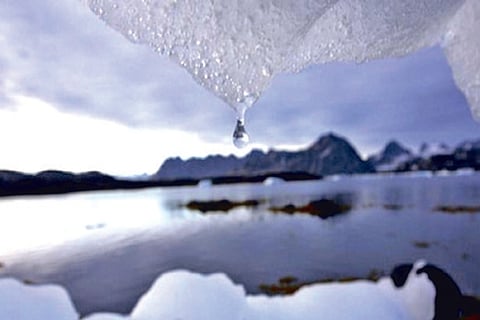

Chennai
In the 2004 disaster movie The Day After Tomorrow, the warming Gulf Stream and North Atlantic currents cause rapid polar melting. The result is a massive wall of ocean water that swamps New York City and beyond, killing millions in the process. And like the recent polar vortex in the Northern Hemisphere, freezing air then rushes in from the poles to spark another ice age.
The premise is obviously ridiculous. Or is it? Rapid glacial retreat in Alaska in 2015 did in fact trigger a huge landslide and a mega tsunami that was nearly 200 meters (650 feet) high when it hit shore. Few knew or cared because it luckily happened at the end of the Earth where no one was living. Many of us might believe we won’t be directly impacted by the breakup of trillions of tons of ice due to global heating. We figure that unless we live on a small island in the Pacific, or have a house on the beach, it’s not our problem.
Or is it? It’s complicated. While it’s true that the glaciers, ice caps and ice sheets covering 10% of the Earth’s land mass are mostly in the middle of nowhere, their rapid breakup has a cascading effect. Consider how all the extra fresh water in the ocean is diluting salt levels. And how that messes with the balance of the Gulf Stream, one of the world’s most important ocean currents. The result is climate extremes, especially tropical storms and hurricanes in places like the Gulf of Mexico, but also more frequent floods and droughts on both sides of the Atlantic.
To put this meltdown in context, the rate of ice sheet retreat has increased nearly 60% since the 1990s. That’s a 28 trillion ton net loss of ice between 1994 and 2017. Antarctica’s epic ice sheet, the world’s largest, and the world’s mountain glaciers have suffered half of this loss. Again, it’s the domino effect that’s worrying. With temperatures rising twice as fast in the Arctic — the world’s air conditioner — than anywhere else on the planet, the heat is not just melting ice. It’s also weakening atmospheric air currents known as the jet stream. In other words, more bad news for the weather. The polar vortexes that have been freezing Europe and North America in recent years are related to a weakened polar jet stream. The cold might be welcome as the planet heats up, but here’s the thing: Arctic regions are heating up, too. Which means the ice that’s supposed to be reflecting the sun’s energy away from Earth isn’t as much anymore, leaving the sea to absorb this heat. Like global heating, the best way to mitigate the meltdown is to stop polluting the atmosphere with global warming-inducing carbon.
The process can’t be reversed overnight. Even if people across the world stopped using fossil fuels tomorrow, one-third of the world’s remaining glaciers would still disappear. So to save some amount of precious polar and glacial ice, we need to avoid the temperature rise of over 3 degrees Celsius (5.4 Fahrenheit) that the UN says is inevitable if governments don’t step up climate targets.
If the world can decarbonise by 2050, it might be possible to preserve around one-third of the current glacial mass by century’s end. That would take both government action and a radical commitment to reduce our individual carbon footprint. The future remains uncertain. But it’s likely that if melting isn’t slowed real soon, disaster movie scenarios might not look ridiculous to future generations.
This article was provided by Deutsche Welle
Visit news.dtnext.in to explore our interactive epaper!
Download the DT Next app for more exciting features!
Click here for iOS
Click here for Android